.
A History of the Litchfield Female Academy
Sarah Pierce, born in 1767, was the 5th child and 4th daughter of Litchfield, Connecticut, farmer and potter John Pierce and his wife Mary Paterson. Sarah’s mother died in 1770, and 2 years later her father remarried and had 3 more children.
Sarah Pierce 1767-1852
Her father died in 1783, leaving her brother John Pierce, responsible for his step-mother and 7 younger siblings. During the Revolutionary War, Pierce became the Assistant Paymaster of the army; and after the war, he was named Commissioner of the Army, responsible for settling the army’s debts.
As he prepared to marry, Pierce sent his younger sisters Mary and Sarah to New York City schools specifically to train to become teachers, so that they could help support their step-mother and younger half-siblings. Returning to Litchfield, Sarah Pierce brought a few students with her from New York and established her school. It was a commercial family undertaking. Her sister Mary handled the boarders and the school accounts, while her sister Susan’s husband, James Brace, also taught in the school.
The Litchfield Female Academy was one of a small group of early schools that played a critical role in shaping later educational, social and economic opportunities for women. Over 3000 young ladies attended the school over its 41 year history. From 1792-1833, the Litchfield Female Academy attracted students from 15 states and territories, Canada, Ireland and the West Indies.
Rebecca Couch Mrs James C. Denison 1788-1863 View of Litchfield 1805
In 1792, the school differed little from the large number of small female academies opening throughout the country, especially in the northeastern states. Pierce first offered a limited curriculum of a smattering of English, ancient and European history, geography, arithmetic and composition. Pierce continuously improved and expanded her academic curriculum, offering many subjects rarely available to women, including logic, chemistry, botany, and mathematics.
At the same time, Pierce experimented with innovative ways to unite the academic and ornamental subjects. Students drew and painted maps and made charts of historical events to reinforce geography and history lessons. Students also illustrated poetry, literature, and mythological and biblical readings with elaborate embroideries and detailed watercolor paintings. Botany and natural history lessons were often illustrated with watercolor drawings.
Although primarily interested in a strong academic curriculum, Sarah Pierce knew that teaching the ornamental subjects was critical to the success of her school. In the 18th century, most wealthy parents were willing to invest in a son’s education, because it increased his chances of pursuing a profitable career. For young women, advanced educational opportunities were few, and the ability of their families to pay the high cost of an education became a symbol of wealth.
The decorative paintings and needleworks made by the girls at female academies were hung in their parents' formal parlors as proof of family prosperity. Learning dancing, music, foreign languages, art and other ornamental subjects was also important for those students who wanted to become teachers, start their own academies, or marry well.
Sarah Pierce encouraged her students to become involved in benevolent and charitable societies. The Litchfield Female Academy students organized to support local missionary, bible and tract societies and raised money for the training of ministers.
Two of her students, sisters Catharine Beecher and Harriet Beecher Stowe, wrote books; others became teachers.
Sarah Pierce 1767-1852
Piece never married and died at the age of 83 years old. The Litchfield Enquirer newspaper published an obituary on January 22, 1852 which read "We regret the necessity which compels us to announce the departure from this life of one who has perhaps been more extensively known for a period of sixty years than any other lady in New England. Miss Sarah Pierce died at her residence in this village on Monday morning, the 19th last, at the advanced age of 83 years. In 1792, Miss Pierce established a Female Seminary in this place which, as it was the first institution of the kind in this part of the country required great celebrity and pupils resorted to it from distant States as well as from various parts of our own State. This institution was incorporated by the Legislature of Connecticut under the name of the 'Litchfield Female Academy.' Miss Pierce retired from the institution several years ago and has since lived in quiet enjoyment of an ample fortune, universally respected for her constant piety, systematic benevolence and cheerful hospitality."
.
A History of the Litchfield Female Academy
Sarah Pierce, born in 1767, was the 5th child and 4th daughter of Litchfield, Connecticut, farmer and potter John Pierce and his wife Mary Paterson. Sarah’s mother died in 1770, and 2 years later her father remarried and had 3 more children.
Sarah Pierce 1767-1852
Her father died in 1783, leaving her brother John Pierce, responsible for his step-mother and 7 younger siblings. During the Revolutionary War, Pierce became the Assistant Paymaster of the army; and after the war, he was named Commissioner of the Army, responsible for settling the army’s debts.
As he prepared to marry, Pierce sent his younger sisters Mary and Sarah to New York City schools specifically to train to become teachers, so that they could help support their step-mother and younger half-siblings. Returning to Litchfield, Sarah Pierce brought a few students with her from New York and established her school. It was a commercial family undertaking. Her sister Mary handled the boarders and the school accounts, while her sister Susan’s husband, James Brace, also taught in the school.
The Litchfield Female Academy was one of a small group of early schools that played a critical role in shaping later educational, social and economic opportunities for women. Over 3000 young ladies attended the school over its 41 year history. From 1792-1833, the Litchfield Female Academy attracted students from 15 states and territories, Canada, Ireland and the West Indies.
Rebecca Couch Mrs James C. Denison 1788-1863 View of Litchfield 1805
In 1792, the school differed little from the large number of small female academies opening throughout the country, especially in the northeastern states. Pierce first offered a limited curriculum of a smattering of English, ancient and European history, geography, arithmetic and composition. Pierce continuously improved and expanded her academic curriculum, offering many subjects rarely available to women, including logic, chemistry, botany, and mathematics.
At the same time, Pierce experimented with innovative ways to unite the academic and ornamental subjects. Students drew and painted maps and made charts of historical events to reinforce geography and history lessons. Students also illustrated poetry, literature, and mythological and biblical readings with elaborate embroideries and detailed watercolor paintings. Botany and natural history lessons were often illustrated with watercolor drawings.
Although primarily interested in a strong academic curriculum, Sarah Pierce knew that teaching the ornamental subjects was critical to the success of her school. In the 18th century, most wealthy parents were willing to invest in a son’s education, because it increased his chances of pursuing a profitable career. For young women, advanced educational opportunities were few, and the ability of their families to pay the high cost of an education became a symbol of wealth.
The decorative paintings and needleworks made by the girls at female academies were hung in their parents' formal parlors as proof of family prosperity. Learning dancing, music, foreign languages, art and other ornamental subjects was also important for those students who wanted to become teachers, start their own academies, or marry well.
Sarah Pierce encouraged her students to become involved in benevolent and charitable societies. The Litchfield Female Academy students organized to support local missionary, bible and tract societies and raised money for the training of ministers.
Two of her students, sisters Catharine Beecher and Harriet Beecher Stowe, wrote books; others became teachers.
Sarah Pierce 1767-1852
Piece never married and died at the age of 83 years old. The Litchfield Enquirer newspaper published an obituary on January 22, 1852 which read "We regret the necessity which compels us to announce the departure from this life of one who has perhaps been more extensively known for a period of sixty years than any other lady in New England. Miss Sarah Pierce died at her residence in this village on Monday morning, the 19th last, at the advanced age of 83 years. In 1792, Miss Pierce established a Female Seminary in this place which, as it was the first institution of the kind in this part of the country required great celebrity and pupils resorted to it from distant States as well as from various parts of our own State. This institution was incorporated by the Legislature of Connecticut under the name of the 'Litchfield Female Academy.' Miss Pierce retired from the institution several years ago and has since lived in quiet enjoyment of an ample fortune, universally respected for her constant piety, systematic benevolence and cheerful hospitality."
.




+Litchfield+South+East+View+from+Chestnut+Hill+from+Connecticut+Historical+Collections.+1837.jpg)
+Martha+Spear+(Mrs.+John+Johnston).jpg)
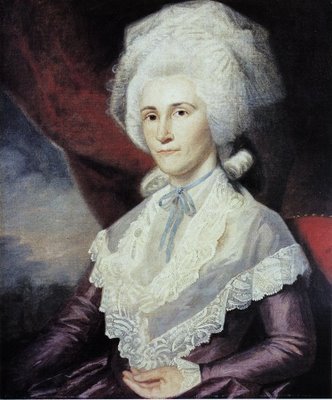.+Mrs.+James+Duane..jpg)
.+Mrs.+Alexander+Hamilton..jpg)
.+Clarissa+Seymour+(Mrs.+Truman+Marsh)..jpg)
.+Esther+Boardman..jpg)
.+Mariann+Wolcott..jpg)
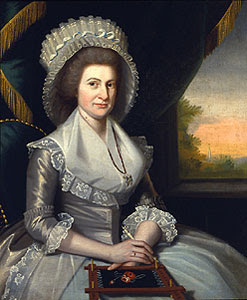.+Sarah+Tucker..jpg)
.+Mary+Smith+Booth..jpg)
.+Jerusha+Benedict+(Ives)..jpg)
.+Huldah+Bradley..jpg)
.+Apphia+Ruggles+(Mrs.+Jared+Lane)..jpg)
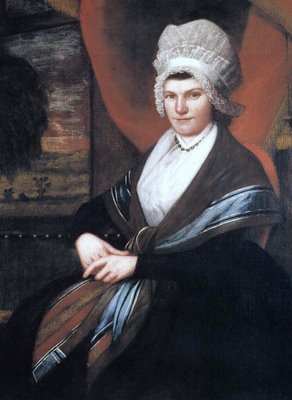.+Mary+Schenck+(Mrs.+Elijah+Dewey)..jpg)
 1793 Ralph Earl (1751-1801). Ann Whiteside (1762-1826) (Mrs. Ralph Earl)
1793 Ralph Earl (1751-1801). Ann Whiteside (1762-1826) (Mrs. Ralph Earl)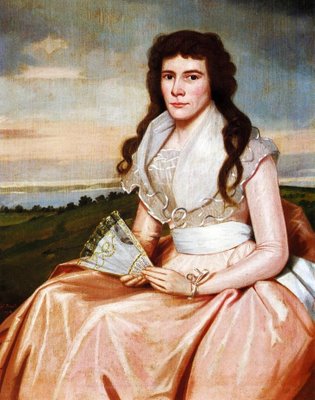.+Lucy+Bradley..jpg)
.+Mrs+Charles+Jeffery+Smith..jpg)
.+Sarah+Perry+(Mrs.+David+Hubbell)..jpg)
.+Elizabeth+Eliot+(Mrs.+Gershom+Burr)..jpg)
+Mrs.+Ebenezer+Porter+(Lucy+Patty+Pierce+Merwin).jpg)
++Mrs.+Sherman+Boardman+(Sarah+Bostwick)+New+Milford+Hist+Soc.jpg)
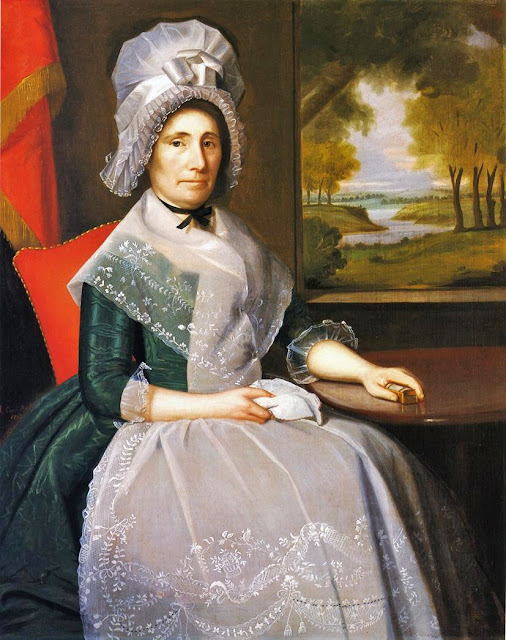++Mrs.+Richard+Alsop+Nat+Mus+Amer+Art1st-gallery-art.com.jpg)
++Mrs+Jos+Wright+Nat+Mus+Art1st-gallery-art.com.jpg)
+Mrs+John+Watson+Munson+Williams+Proctor+Art1st-gallery-art.com.jpg)
+Mrs+Nathaniel+Taylor+Newark+Mus1st-gallery-art.com.jpg)


+1831.jpg)





+View+of+Earl+of+Burlington's+House+at+Chiswick+1816.jpg)







































 1759 Benjamin West (1738-1820). Jane Galloway (1745-1801)
1759 Benjamin West (1738-1820). Jane Galloway (1745-1801).+Jane+Alien+(Mrs.+John+Penn)..jpg) c 1760 Benjamin West (1738-1820). Anne Allen (later Mrs. John Penn). John Penn (1729-1795) was the last governor of colonial Pennsylvania, serving from 1763-1771 & 1773-1776, & he was a grandson of William Penn. Thos portrait of the daughter of West's benefactor Chief Justice William Allen may have been painted as West was traveling from Pennsylvania to Italy & then to England.
c 1760 Benjamin West (1738-1820). Anne Allen (later Mrs. John Penn). John Penn (1729-1795) was the last governor of colonial Pennsylvania, serving from 1763-1771 & 1773-1776, & he was a grandson of William Penn. Thos portrait of the daughter of West's benefactor Chief Justice William Allen may have been painted as West was traveling from Pennsylvania to Italy & then to England...jpg)


.+Wyntje+Lavinia+Van+Vechten.+Brooklyn+Museum..jpg)
+Catryna+Van+Rensselaur+Ten+Broeck.+Philadelphia+Museum+of+Art..jpg)
-oceansbridge.jpg)
+Maria+Van+Alen+(Mrs.+Thomas+Van+Alstyne.)+New+York+Historical+Society..jpg)
+Ariaantja+Coeymans+Verplank+(1672-1743)+Mrs+David+Verplank.+Albany+Institute+of+History+%26+Art..jpg)
+Elsje+Rutgers+(Mrs.+David+Schuyler,+Mrs.+Domine+Vas)+Albany+Institute+of+History+and+Art..jpg) 1723 Attributed to Gerardus I. Duyckinck (1695-1746) Elsie Rutgers Schuyler (Mrs. Petrus) Vas (1674-after 1752)
1723 Attributed to Gerardus I. Duyckinck (1695-1746) Elsie Rutgers Schuyler (Mrs. Petrus) Vas (1674-after 1752)

+Catarina+De+Wandelaer+Gansevoort+(1689-1767)+Albany+Institute+of+History+and+Art,+New+York.jpg)
+Girl+of+the+Van+Rensselaer+Family..jpg)


.+Catherine+Williams+(Mrs.+Elias+Boudinot+III).+Princeton+Universtiy+Art+M.jpg)






Crystal+Bridges+Museum+of+American+Art,+Bentonville,+Arkansas..jpg)








.jpg)
+Eliz+storer+Mrs+Isaac+Smith+MFA.jpg)
+Anne+McCall+Philadelphia+Bayou+Bend+Houston+Mus+Fine+Arts.jpg) 1746 Robert Feke (American colonial era artist, 1707-1751). Anne McCall. Robert Feke was born on Long Island, New York. Little is known of his life until 1741, when he painted the Family of Isaac Royall. There are about 16 portraits known to be painted by Feke plus others argued to be by him. Feke worked in Boston, painting the families of wealthy merchants & landowners and seemed to disappear from the records about 1750.
1746 Robert Feke (American colonial era artist, 1707-1751). Anne McCall. Robert Feke was born on Long Island, New York. Little is known of his life until 1741, when he painted the Family of Isaac Royall. There are about 16 portraits known to be painted by Feke plus others argued to be by him. Feke worked in Boston, painting the families of wealthy merchants & landowners and seemed to disappear from the records about 1750.+Anne+Shippen+Mrs+Chales+Willing+1710-1791+Winterthur.jpg)
+Mary+McCall+(1725-1799)++Mrs+William+Plumstead+(Mayor+of+Phil)+Phil+Acad+of+Arts.jpg)
+Mrs.+Charles+Apthorp+Grizzell+Eastwick+Apthorp+++++San+Fran+Fine+Arts.jpg)
+Mrs+Isaac+Winslow++Brooklyn+Museum.jpg)


.+Susannah+Faneuil+(Mrs.+James+Boutineau).+Nova+Scotia+Museum..jpg) 1748 Robert Feke (American colonial era artist, 1707-1751). Susannah Faneuil (Mrs. James Boutineau).
1748 Robert Feke (American colonial era artist, 1707-1751). Susannah Faneuil (Mrs. James Boutineau).+Mrs.+Henry+Bromfield+(Margaret+Fayerweather+MFA+(3).jpg)
.+Mary+(Mrs.+John+Channing).+Museum+of+Fine+Arts,+Boston..jpg)




.++Mrs.+James+Greenway+College+of+Wm+%26+Mary.jpg) 1780 John Durand (French-born?, English-trained, American painter, 1731-1805) Mrs. James Greenway
1780 John Durand (French-born?, English-trained, American painter, 1731-1805) Mrs. James Greenway++Lucy+Skelton+Gilliam+or+Mrs+Robert+Gilliam.jpg)


.++Hannah+Farmer+(Mrs.+Benjamin+Peck)+Winterthur.jpg) 1768-70 John Durand (French-born?, English-trained, American painter, 1731-1805) Hannah Farmer (Mrs. Benjamin Peck)
1768-70 John Durand (French-born?, English-trained, American painter, 1731-1805) Hannah Farmer (Mrs. Benjamin Peck)
.+Sarah+Whitehead+Hubbard+encore.jpg) 1768 Attributed by some to John Durand (French-born?, English-trained, American painter, 1731-1805) Sarah Whitehead Hubbard
1768 Attributed by some to John Durand (French-born?, English-trained, American painter, 1731-1805) Sarah Whitehead Hubbard+Jane+Beekman+1766.jpg)
+Mary+Beekman+1766.jpg)
++The+Rapalje+Children.jpg)
_+Martha+Tucker+(Mrs_+Thomas+Newton+II)_.jpg)
+1765.+Boys+on+a+Walk+within+a+Walled+Garden.+1765.bmp)
++Mrs+Adriaan+Bancker+c+1775.jpg)
++Anne+Billhop+Farmer+Jarvis,+1772.jpg)






.+Abigail+Browne+(Mrs.+Joseph+Blaney)+MFA.jpg)

.+Mrs+James+Pitts.+Detroit+Inst+Arts.jpg) 1757 Joseph Blackburn (fl in the colonies 1754-1763). Mrs James Pitts
1757 Joseph Blackburn (fl in the colonies 1754-1763). Mrs James Pitts.+Susan+Apthorp+(Mrs.+Thomas+Bulfinch).+MFA.jpg)
.+Hannah+Babcock+(Mrs.+John+Bours)+Worchester.jpg)


.Hannah+Wentworth+Atkinson.+Cleveland.jpg) 1760 Joseph Blackburn (fl in the colonies 1754-1763). Hannah Wentworth Atkinson
1760 Joseph Blackburn (fl in the colonies 1754-1763). Hannah Wentworth Atkinson.+Elizabeth+Browne+Rogers.+Reynolda+House+Winston1st-gallery-art.com.jpg) 1761 Joseph Blackburn (fl in the colonies 1754-1763). Elizabeth Browne Rogers
1761 Joseph Blackburn (fl in the colonies 1754-1763). Elizabeth Browne Rogers.Woman+Brooklyn.jpg)
.+Mrs+Samuel+Cutts+.Met1st-gallery-art.com.jpg)



.+ann-phillips.jpg)
.+mrs-gillam-phillips-marie-faneuil.jpg)


.+Elizabeth+Hughes.jpg)

+Portrait+of+a+Jacobite+Lady.+myartprints.com+Edinburgh,+The+Drambuie+Collection.jpg) 1745-50s Cosmo Alexander (1724-1772.) Portrait of a Jacobite Lady.
1745-50s Cosmo Alexander (1724-1772.) Portrait of a Jacobite Lady..+Margaret+Stiles+Manning.+Brown+University+Portrait+Collection.jpg) 1770 Cosmo Alexander (1724-1772). Margaret Stiles Manning.
1770 Cosmo Alexander (1724-1772). Margaret Stiles Manning..++Mary+Jemima+Balfour.++Virginia+Historical+Society..jpg) 1770 Cosmo Alexander (1724-1772). Mary Jemima Balfour.
1770 Cosmo Alexander (1724-1772). Mary Jemima Balfour..+Girl+with+a+Lamb..jpg) 1770 Attributed to Cosmo Alexander (1724-1772). Girl with a Lamb.
1770 Attributed to Cosmo Alexander (1724-1772). Girl with a Lamb..+Girl+with+a+Squirrel..jpg) 1770 Attributed to Cosmo Alexander (1724-1772). Girl with a Squirrel.
1770 Attributed to Cosmo Alexander (1724-1772). Girl with a Squirrel.




 1745 American Painting - Joseph Badger (1708-1765). Detail of John Gerry (1741-1786) brother of Elbridge Gerry of Boston with bird.
1745 American Painting - Joseph Badger (1708-1765). Detail of John Gerry (1741-1786) brother of Elbridge Gerry of Boston with bird.



.jpg) 1755 American Painting - John Wollaston (1710-1775). Detail Elizabeth Page & Mann Page, children of Mann & Ann Corbin (Tayloe) Page of Rosewell, Gloucester County, with bird.
1755 American Painting - John Wollaston (1710-1775). Detail Elizabeth Page & Mann Page, children of Mann & Ann Corbin (Tayloe) Page of Rosewell, Gloucester County, with bird.

 1758 American Painting - John Singleton Copley (1738-1815). Detail Thomas Aston Coffin with two birds.
1758 American Painting - John Singleton Copley (1738-1815). Detail Thomas Aston Coffin with two birds. American Painting 1760 Joseph Badger (1708-1765). James Badger with bird.
American Painting 1760 Joseph Badger (1708-1765). James Badger with bird. American Painting 1760 Joseph Badger (1708 - 1765). Detail of Jemima Flucker with bird.
American Painting 1760 Joseph Badger (1708 - 1765). Detail of Jemima Flucker with bird.+Phil+Acad+of+Fine+Arts+2.jpg) American Painting 1763-65 Henry Benbridge (1743-1812). Detail of Gordon Family with bird.
American Painting 1763-65 Henry Benbridge (1743-1812). Detail of Gordon Family with bird.
.jpg)
















_+Jerusha+Benedict+(Ives)_.jpg)
.++Mrs+Richard+Brown+Smithsonian.jpg) 1760 John Hesselius (1728-1778). Mrs. Richard Brown
1760 John Hesselius (1728-1778). Mrs. Richard Brown.++jean+Dick+(Mrs.+Anthony+Stewart)+MFA.jpg) 1760s John Hesselius (1728-1778). Jean Dick (Mrs. Anthony Stewart)
1760s John Hesselius (1728-1778). Jean Dick (Mrs. Anthony Stewart).+The+Grymes+Children-+Lucy+1743-1830,+Philip+1746-1805,+Jno+Randolph+1747-96,+Chas+1748-+.+Virginia+Historical+Society,+Richmond.jpg)



.jpg)
.+Eleanor+Addison.jpg)
.+Mrs+Middleton.+Hammond+Harwood+House,+Annapolis,+Maryland.jpg) 1760 John Hesselius (1728-1778). Mrs Middleton.
1760 John Hesselius (1728-1778). Mrs Middleton.
.+Rebecca+Holdsworth+and+grandaughter+Rebecca+Woodward.jpg) 1763 John Hesselius (1728-1778). Rebecca Holdsworth and grandaughter Rebecca Woodward.
1763 John Hesselius (1728-1778). Rebecca Holdsworth and grandaughter Rebecca Woodward.
.+Elizabeth+Galloway+(Mrs+Thomas+Sprigg).+Art+Institute+of+Chicago..jpg) 1764 John Hesselius (1728-1778). Elizabeth Galloway (Mrs Thomas Sprigg).
1764 John Hesselius (1728-1778). Elizabeth Galloway (Mrs Thomas Sprigg)..+Mrs+Richard+Galloway+Met+artrenewal.com.jpg) 1764 John Hesselius (1728-1778). Mrs. Richard Galloway.
1764 John Hesselius (1728-1778). Mrs. Richard Galloway.

.+Portrait+of+Susannah+Rose+Lawson+(Mrs.+Gavin+Lawson)(1749-1825).jpg)
.jpg)
.+Rebecca+Orne+(later+Mrs.+Joseph+Cabot).+Worcester+Museum+of++Art..jpg)
+pvt1st-gallery-art.com.jpg) 1765 John Singleton Copley (American artist, 1738-1815). Frances Deering Wentworth (Mrs. Theodore Atkinson, Jr.)
1765 John Singleton Copley (American artist, 1738-1815). Frances Deering Wentworth (Mrs. Theodore Atkinson, Jr.) 1760s William Williams (American artist, 1727-1791). Deborah Hall. Detail
1760s William Williams (American artist, 1727-1791). Deborah Hall. Detail.+Girl+with+a+Squirrel..jpg)

.+Boy+(Henry+Pelham)+with+a+Squirrel..jpg)


 1790 Denison Limner Probably Joseph Steward (American artist, 1753-1822). Miss Denison of Stonington, Connecticut possibly Matilda.
1790 Denison Limner Probably Joseph Steward (American artist, 1753-1822). Miss Denison of Stonington, Connecticut possibly Matilda. 1798 Ralph Earl (American artist, 1751-1801). Elizabeth Eliot (Mrs. Gershom Burr)
1798 Ralph Earl (American artist, 1751-1801). Elizabeth Eliot (Mrs. Gershom Burr)+4+Courtesans+and+3+Gentlemen.jpg)
+4+Courtesans+and+3+Gentlemen.jpg)
+Lady+with+a+Squirrel.jpg)
+Lady+with+a+Squirrel+(2).jpg)
.+Portrait+of+a+Lady+with+a+Squirrel.jpg)
,+in+a+Green+Dress+and+a+Pet+Squirrel.jpg)
+Charles+Joseph+(1649-1664)+Archduke+of+Austria+with+Squirrel.jpg)
+Lady+with+a+Squirrel+and+a+Spaniel.jpg)
+A+Portrait+of+a+Boy+with+a+Pet+Squirrel..jpg)


+The+Family+of+Sir+Eldred+Lancelot+Lee.jpg)


+Boy+with+a+Deer.jpg)




+(Italian,+active+in+Britain+(1758-1770;+1777-1780s)+Servants+Washing+a+Deer.jpg)
+Woman+with+a+Deer.jpg)
+Marie+de+Rohan,+Duchess+of+Chevreuse+1600-1679+as+Diana+the+Huntress.jpg)
+Allegory+of+Hearing.jpg)
+Unknown+Lady+in+a+Red+Mantle+with+a+Deer.jpg)
+A+Girl+with+a+Deer.jpg)
+Mother+and+Children+in+a+Park.jpg)
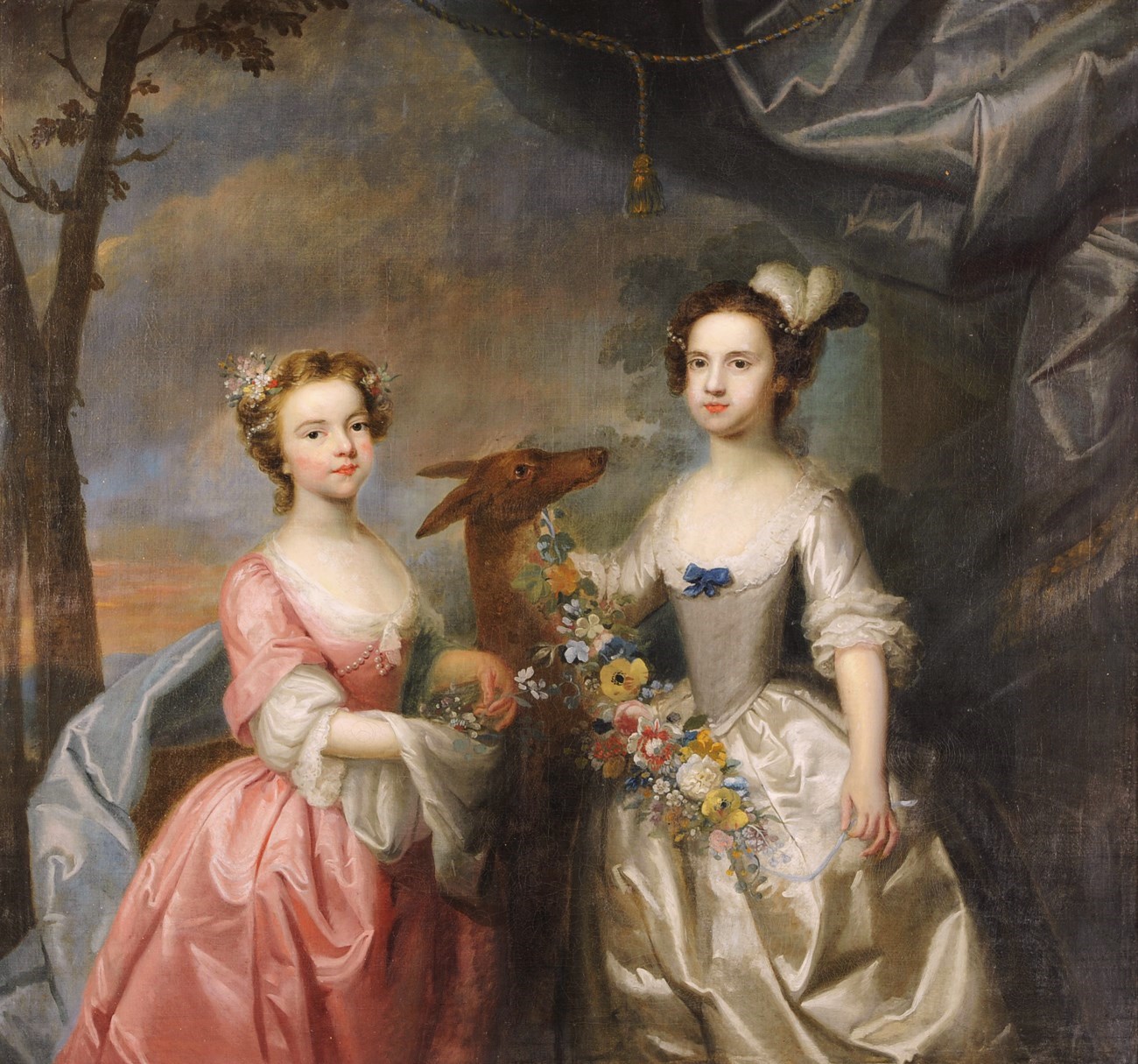+Daughters+of+Crisp+Molineaux,+Elizabeth..jpg)
+Lady+Charlotte+Campbell.jpg)
+Elisa+Bonaparte+and+her+Daughter+in+the+Boboli+Gardens+in+Florence.jpg)